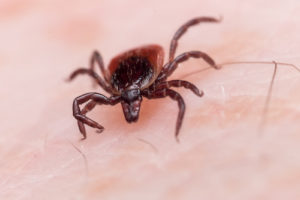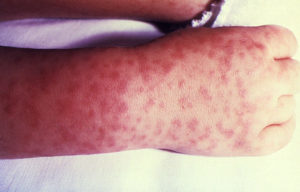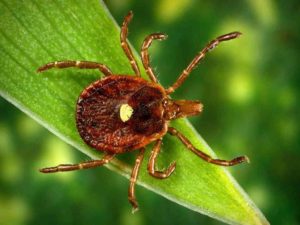Those, who suffer from Alpha-gal Syndrome, it is known that pork and beef are off the menu.
But can these tick bite victims eat chicken and turkey? The unfortunate truth? Not all chicken and turkey products are safe for Lone Star tick bite victims with Alpha-gal Syndrome.

Coming from a middle class family, we were taught never to take what we enjoyed for granted. My dad worked as a mail carrier; and he also worked several nights part-time in a neighborhood liquor store to augment our family income. My mom also worked in the payroll department of a major department store – way before the days of direct deposit were even a pipe dream. Store employees received their wages in cash, nestled in hard addressed envelopes. True.
Part of our gestalt behavior was to only eat what you said you wanted at mealtime. Wasting food was a sin, a mindset that came from our ancestors who suffered through the Great Depression.
If you’re still with me, this is why I share this. My family cherishes mealtime when our children and grandchildren can all be in the same place at the same time – an an event made even more precious since the days of COVID isolation.
Last Easter, we decided to bite the proverbial bullet and host dinner outside on our backyard patio for the nine of us. My wife decided to make sauce – or better known as Italian Sunday Sauce or Gravy.
The preparation of enjoying such a feast is virtually an all-day affair. The early morning hours found her in our kitchen handcrafting meatballs of ground beef, veal, and lamb, beautifully seasoned with breadcrumbs, eggs, and loads of Pecorino Romano cheese. For an extra layer of flavor, a slab of spareribs was also cut up and fried in virgin olive oil after the meatballs and added to the simmering sauce.
Plan B – Sunday Gravy For An Alpha-Gal Sufferer
With our son-in-law now suffering from AGS due to a Lone Star tick bite he received when visiting a local farm, my wife put on her thinking cap and decided to create an alternative recipe which we could ALL safely enjoy.
The solution for the meat substitutes? Chicken sausage and turkey sausage – a creative stroke of genius – or so I thought.
As we sat down in the fresh Spring air to enjoy this inventive feast, my son-in-law said, “Mom, this is all wonderful – and I really appreciate it – but I can’t eat it. The sausages are in pig casings.” THUD.

All that effort, all that time, and all that money virtually wasted. Of course the rest of the family enjoyed it as we did an “exit stage left” and whipped up a box of mac and cheese for him.
Animal Food Products And By-Products That May Contain Alpha-Gal
Not all patients with AGS have reactions to every ingredient containing alpha-gal. The CDC reports that the following foods or food ingredients may contain alpha-gal. This is not a list of all products or ingredients that may contain alpha-gal.
- Mammalian meat (such as beef, pork, lamb, venison, rabbit, etc.) can contain high amounts of alpha-gal. Certain cuts of meat may contain more alpha-gal than others. For example, organ meat of mammals, including liver, lung, heart, kidneys, intestines (tripe), sweetbreads, scrapple, and Rocky Mountain or prairie oysters generally contain high amounts of alpha-gal.
- Food products that contain milk and milk products typically contain alpha-gal. Cow’s milk is the only alpha-gal containing ingredient classified as a major food allergen.
- Some people with AGS may also be sensitive to alpha-gal found in:
Gelatin made from beef or pork
Products made from or cooked with mammalian fat (such as lard, tallow, or suet)
Meat broth, bouillon, stock, and gravy
Avoid The Serious Threat Of Getting Bitten By A Lone Star Tick With Central Massachusetts Tick Control

When at home, protect yourself, your family, and those near and dear to you with regularly scheduled Randolph tick control, where ticks frequently hide out waiting for their next free ride on humans and pets.
 Rocky Mountain Spotted fever (RMSF) is so far not as common in Massachusetts as Lyme disease. This can make it extra dangerous as physicians and patients do not readily know the risks, signs, and symptoms.
Rocky Mountain Spotted fever (RMSF) is so far not as common in Massachusetts as Lyme disease. This can make it extra dangerous as physicians and patients do not readily know the risks, signs, and symptoms.
